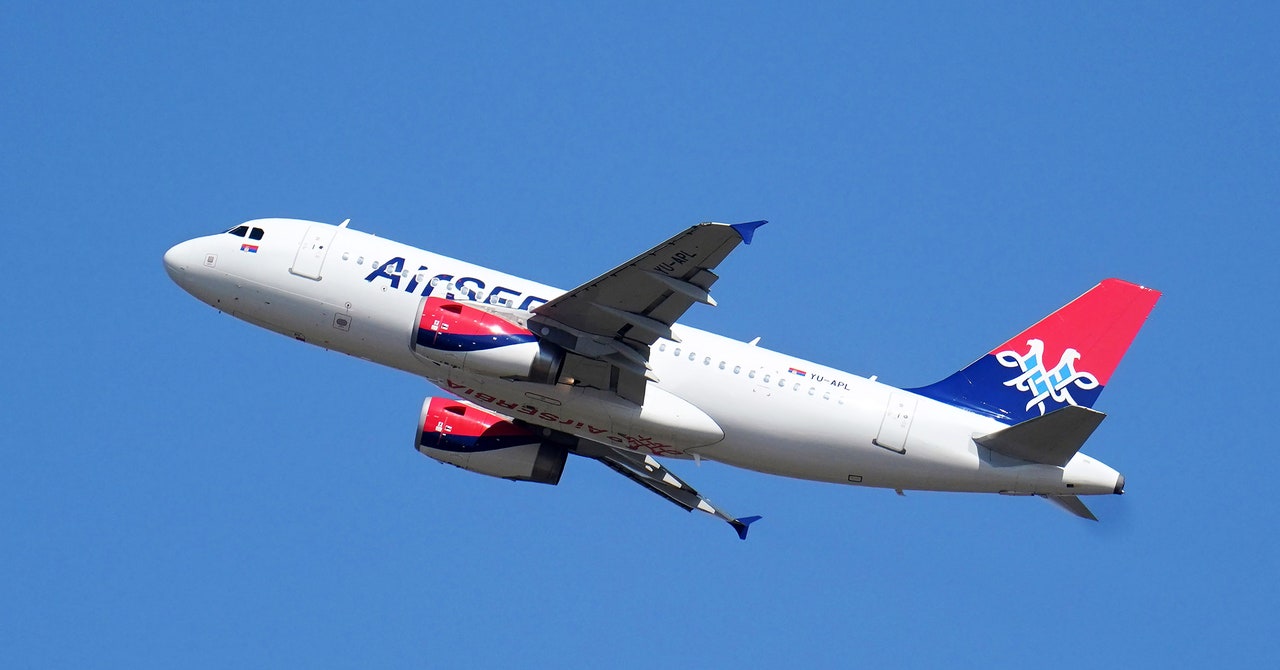An Airbus A320-232 with the tail number, YU-APH made its maiden flight on December 13, 2005. Since then, the aircraft has clocked millions of miles, flying routes for Air Deccan, Kingfisher Airlines, Bingo Airways and Syphax Airlines before being acquired by Air Serbia, the flag carrier of the East -European country, in 2014.
For eight years, YU-APH flew without a hitch – until it landed at Sheremetyevo International Airport in Moscow at 10:37 PM on May 25, 2022. It had flown in from Belgrade and was due to take off again in an hour for a late return flight. But there was a problem: the pilot had reported a problem with the aircraft’s engine housing that needed repair. The supplier of the broken part, Charlotte, North Carolina-based Collins Aerospace, reportedly refused to fix the problem, citing sanctions against Russia following its February 2022 invasion of Ukraine. The plane was trapped. (Collins Aerospace did not respond to a request for comment.)
It took six days for the problem to be resolved and for the A320 to depart from Moscow to Belgrade. Air Serbia also did not respond to a request for comment about how the engine housing was replaced or repaired and who manufactured the part. YU-APH has managed to correct its flaw, but there are mounting international concerns that aircraft flying to, from and around Russia could become a security risk as sanctions prevent them from being properly maintained. Patrick Ky, executive director of the European Union Aviation Safety Agency, said at a recent conference that he considered the situation “very unsafe”. ‘In six months – who knows? In a year – who knows?” he said.
At the end of May, there were 876 aircraft in the Russian commercial jet fighter fleet, according to data provided by Ascend by Cirium, an aviation industry consultancy – fewer than 968 aircraft at the end of February. Most of these were made by Airbus or Boeing planes, both of which stopped supplying spare parts to Russian airlines in order to comply with sanctions rules. “They shouldn’t get any part from Boeing or Airbus,” said Bijan Vasigh, an economics professor at Embry-Riddle Aeronautical University. “The transfer of any part or technical expertise to Russia is prohibited.” The problem is that airplanes need constant maintenance, repairs and replacements.
Airplanes are not simple things, with a plethora of parts coming together to keep passengers in the air. And due to the high deployment of flying, some parts need to be changed very regularly. Anyone who has ever seen an airplane land from the ground or an observation deck landing knows that bringing a heavy metal tube to a stop is a challenge. Tires are among the hardest hit parts of an airplane, burning rubber when the brakes are applied, with clouds of smoke often billowing from the wheels – and lots of slippery, black tracks on the tarmac. Tires are replaced every 120 to 400 aircraft landings. Internal flights with short domestic routes can make four trips per day, which means changing wheels every one to three months. Boeing stopped supplying the Russian market on March 1, 113 days ago. Airbus followed a day later. “They’re going to wear out,” Max Kingsley Jones, senior consultant at Ascend by Cirium, says of the wheels. “They can’t buy replacement tires: that’s a potential risk.”
Worn tires would only be the first indication of decay. Aircraft are powered by computer systems that require regular maintenance, with some systems programmed to shut down and reset after a number of flight cycles or calendar days. That includes aircraft engines and auxiliary power units, the electricity generator that pumps compressed air through the cabin during flight and powers the engine when the aircraft is first turned on. “Some of those parts have a limited lifespan,” says Kingsley Jones. “They literally have to be taken off the plane and replaced when they reach a certain age or a certain number of flights.” Despite the stereotype that old, dilapidated planes have to fly into the ground, Russia’s fleet of planes compares favorably with those in much of the rest of the world. The average age of a Russian-run aircraft is 10.5 years, according to the Association of Tour Operators of Russia. According to management consultancy Oliver Wyman, the average age of the average passenger aircraft worldwide is 10.3 years.

